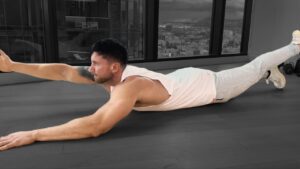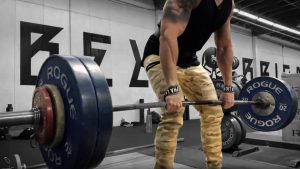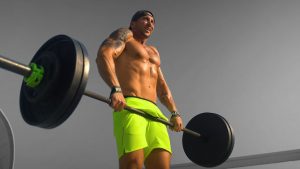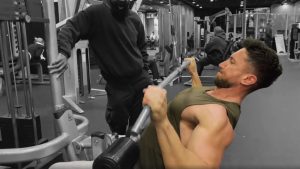While air squats are a classic part of any workout program, the benefit of including a variety of other squats is that they'll help you maximize your glute gains and take your lower-body strengthening to a new level.
Bodyweight squats are a fantastic strength exercise, but there are a lot of ways to make them even better. Add some weight or try box squats, which involve sitting on a bench and then letting gravity pull you down.
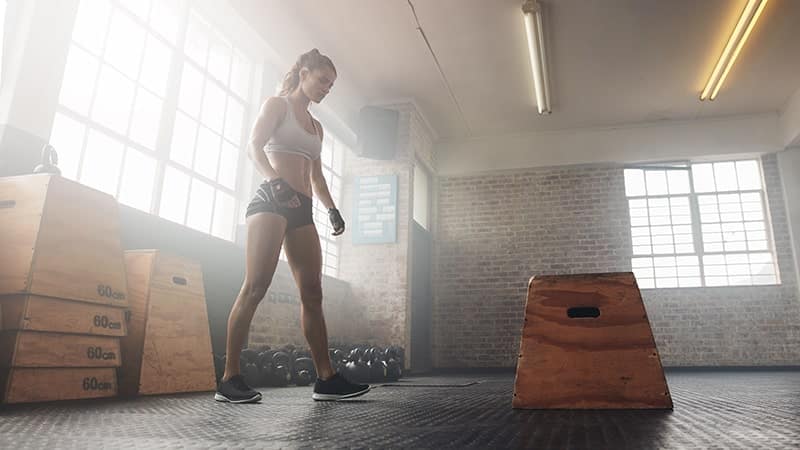
While the box squat is a great tool for a lot of people, it's by no means perfect for everyone. Like all forms of resistance training, there are certain situations in which box squats will help you achieve your goals and others in which they won't be as beneficial. That said, if done properly, box squatting can be an excellent form of assistance training that allows you to develop strength in a full range of motion while building up your hips and hamstrings.
There are plenty of reasons to add box squatting into your routine. It's the perfect way to boost body awareness, aiding in your squat technique and keeping your lower back safe. And, it's a great tool for busting through a squat plateau! What's more, you could use it for rehabbing an injury. These benefits and many others make box squats one of the most beneficial lifting movements of all.
HOW TO PERFORM THE BOX SQUAT
Everyone knows that squats are one of the best lower-body exercises around. Not only do they work your hamstrings, glutes, quadriceps, and calves, but they also help improve balance and stability, flexibility in the hips and knees, and core strength. Plus, squats work your upper body, too!
The height of the box can be easily changed to accommodate different squat variations, such as safety bar squats or front squats. Some people include box squatting in their training programs to increase speed, but they're also beneficial for increasing the strength of certain muscle groups.
Here's what you need to know before you start sitting on the box.
The Setup
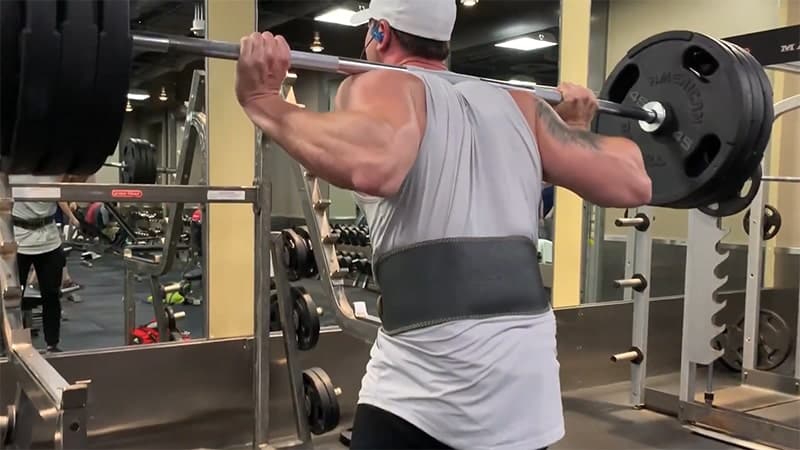
Stand in front of a squat rack and place the bar on your back. Walk back until you reach the point at which your knees are bent at a 90-degree shin angle, and set a box/bench there so that you can sit back on it comfortably.
The box should be about three feet away from the rack so as to give you enough space to walk the barbell out of the rack, sit down on the box, and then stand back up. Your box height or the bench can be adjusted for your specific needs and training outcomes.
Picking Up The Bar
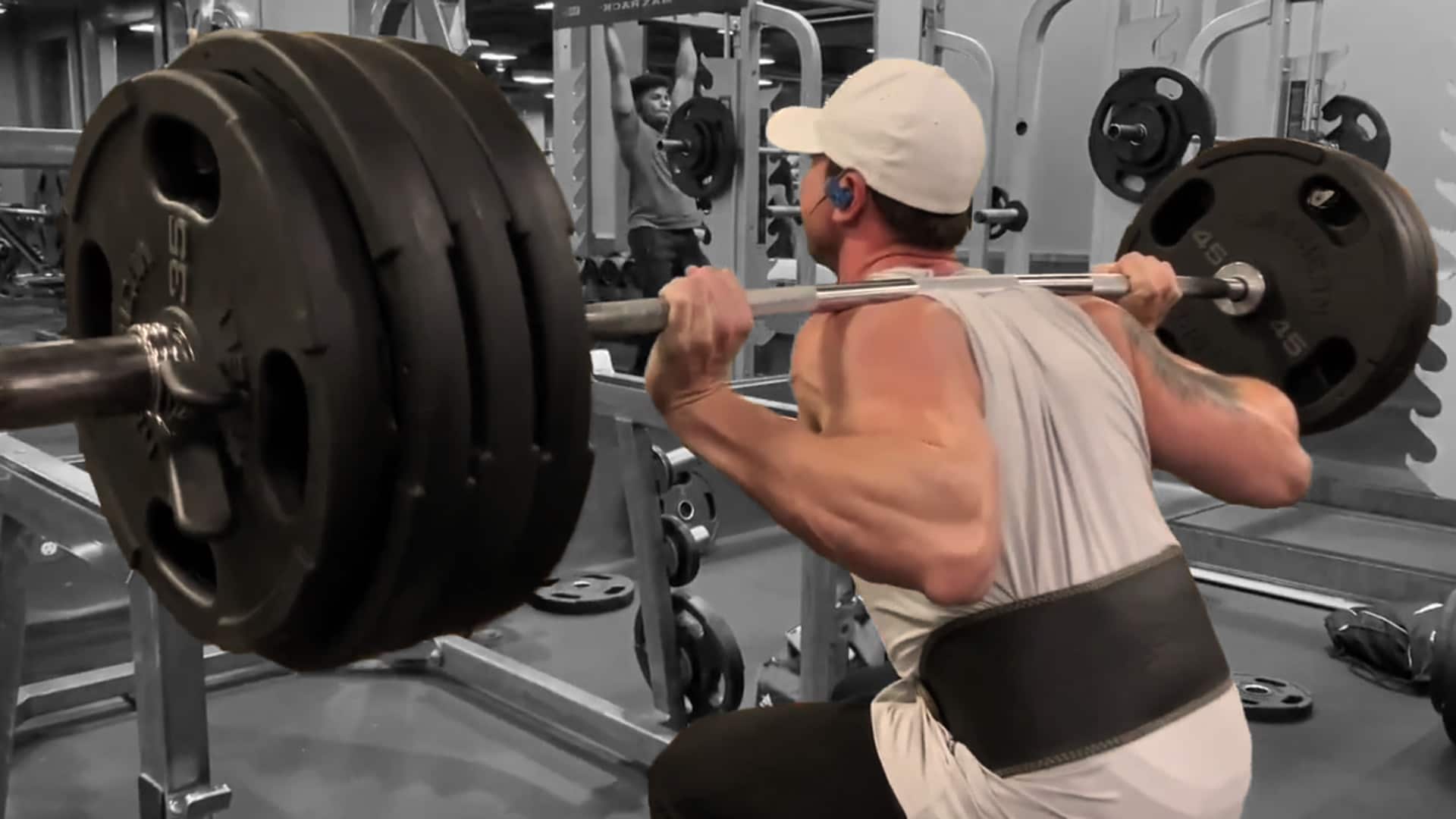
Take a deep breath and bend your knees. Unrack the barbell, stepping back until you're in front of the box with your calves nearly touching it. Position the box or bench so that the edge is underneath you. This position will enable you to lift more weight than if you started in the dead-start position, which is why many lifters begin their lifts from this position.
While keeping your torso erect, push your hips back and lower yourself into the bottom position of a squat. The more your hips shift backward, the more you'll be working to improve your hamstrings, glutes, and erector spinae muscles.
Setting The Hips And Squatting
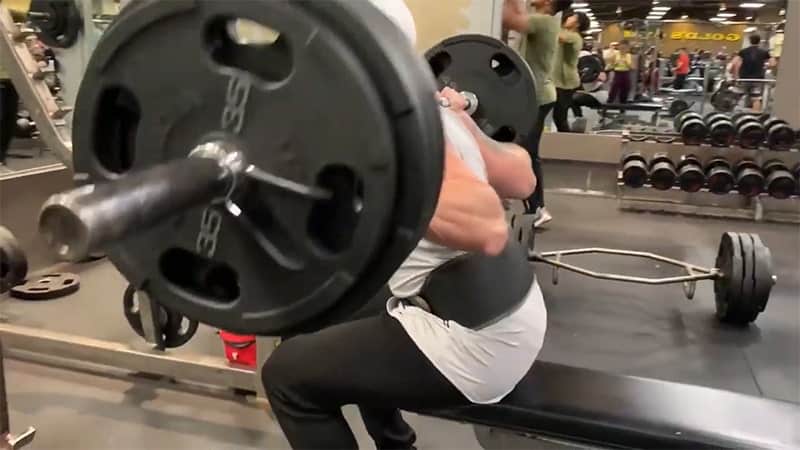
When you lower yourself down, keep your body tense. It's like sitting on a soft pillow or relaxing on the beach. You don't want to collapse, because that can lead to compressive and shearing forces on your spine that can lead to serious injury. The box is just there to give you a guide of where to sit back—don't let it hold you up.
Once your thighs hit the box, pause. Take a moment to compose yourself and let the momentum come to a dead stop, then begin to lift the bar up. As you approach the top, pause again for a beat before lowering the bar back down.
Do not allow yourself to bounce off of the bench. Instead, keep your form tight as you slowly move the weight back to home base. Keep an eye on your shin angle.
Start with a set of 8 reps, rest, do another set, and adjust your rep max from there. Too many reps will tire you out quickly, so plan your box squat exercise routine in advance so you don't use up all of your stamina.
What Is A Box Squat?
Box squats are just a variation of regular squats, only with an added box. But what does that really mean? Well, when you squat down to a box or other object positioned behind you, you can finish your squat by remaining in contact with the box throughout the entire rep.
The most basic way to do box squats is with just your bodyweight and no added weight, though you can do them weighted with any type of equipment. Unlike traditional squats where you squat down until your thighs are parallel to the ground, in the box squat, you squat down until your butt taps the box placed behind you (or bench or chair).
You can practice the squat in many ways. If you're a beginner, try regular squats, with your hips below your knees, but you don't have to be limited by that — you can also try a single-leg box squat if you want to strengthen your legs and ankles. If you're looking for something more advanced, try pistol squats for an incredible workout.
Box Squat Variations
Pause Boxes
The pause box squat requires you to go deeper than the standard box squat. During your pause, focus on staying tight and loaded into the quads and hips at the bottom of the squat. By pausing, you can minimize the stretch reflex, develop concentric strength and overload the eccentric phase — developing explosive power.
Hatfield Squat
Sometimes, the box squat isn't enough — or it hasn't been programmed well. The Hatfield squat, also known as the safety bar squat, can help you with extra assistance at sticking points of the squat. This can be done with a safety squat bar and inside a rack.
Back Squat
The back squat is the original exercise, not truly a variation.Though the movement is as simple as splaying a barbell across the back, it's not really that simple for most people.
Even those with ample mobility and strength have to work hard to improve their squat form and increase reps—whether they're loaded or not. It takes patience, perseverance, and smart training to build up your squat numbers.
Benefits Of Adding Box Squats To Your Workout
When it comes to box squats, there's no correct way to use them. They can be used by novices and experts alike because they're effective — but they may not be used in the same way.
Box squats are a compound movement that works multiple muscle groups and burns an incredible number of calories. For every 1 lb of additional muscle on your body, your metabolism can go up by an additional 50-100 calories burned a day. Those are great benefits for anyone looking to cut, bulk, or improve tone and mobility.
Not only do they help build amazing strength and mass in the quads, posterior chain, and hips, but the box also works other important muscles like the abs, lower back, upper back, shoulders, biceps, and forearms.
What's more, box squats can be modified into a series of exercises that take much of the strain off of your lower back while still testing your strength, mobility, and muscle endurance.
Enhance Muscular Hypertrophy
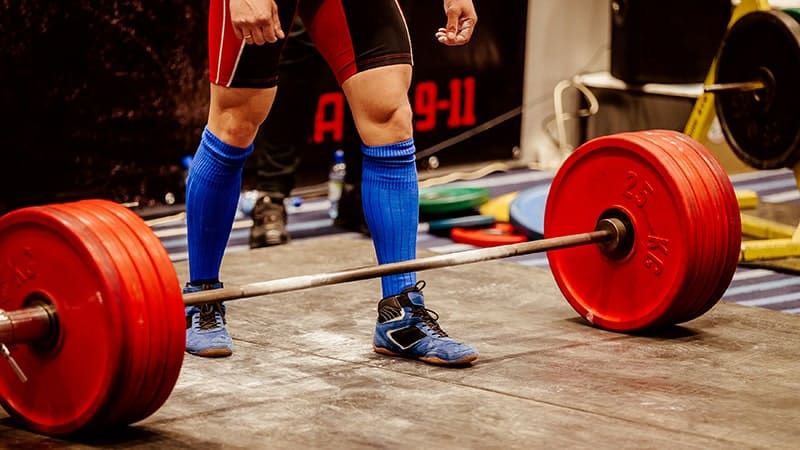
While both the box squat and regular squatting have their purposes, there are several advantages to using the box squat as your primary squatting variation. The primary advantage of the box squat over the traditional squat is that breaking up the stretch-shortening cycle forces a lifter to use more muscles to break parallel and drive the body upward, increasing the amount of muscle mass and kinetic energy required to complete each lift.
It's no secret that the powerlifting community runs a little tight. The reality is that most guys who are looking to build mass aren't in powerlifting gyms, they're in commercial gyms — and those commercial gyms aren't stocked with powerlifting equipment. As a result, when most guys are trying to get big, they're spotting on anything they can find: the box, benches, racks, anything that helps them lift more weight.
Build More Strength
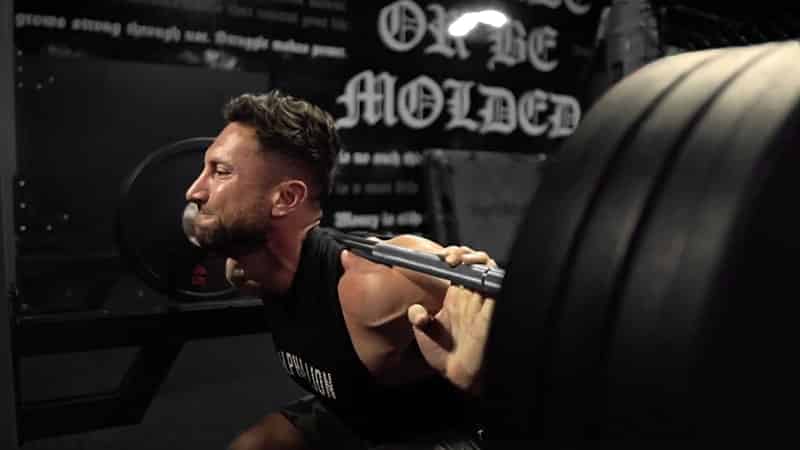
Squatting is the undisputed king of strength builders. They're not just great for toning your quads and glutes, but your calves, back, and core as well. While there are many squatting variations, the box squat is one of the best ways to completely isolate your hamstrings while working on your form and technique. There's no better way to get strong than adding box squats to your routine.
Strength athletes of all types can benefit from paused-squat training because they never encounter it in competition. This type of training teaches athletes to come up from a box or other surface with a maximum weight on their back, which is a valuable skill that prepares them for an explosive start to the lift.
Get More Complete Lower Body Workouts
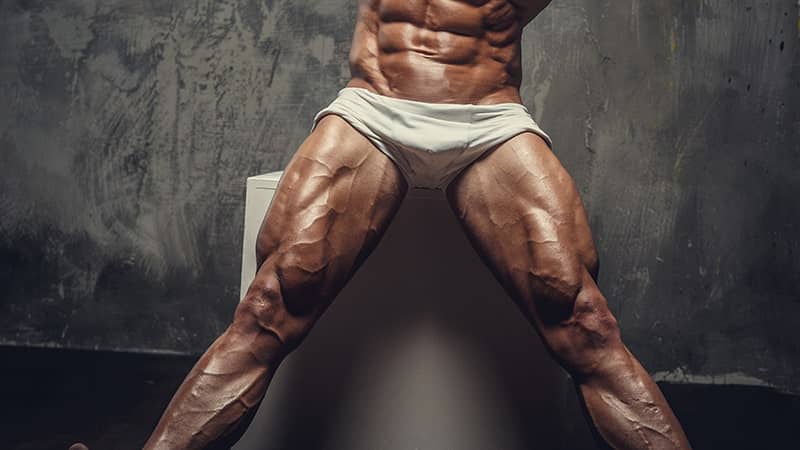
Box squats and heavy squats are an incredibly effective compound exercise that hits your hamstrings, quads, glutes, calves, and core. Holding a weight in front or behind you also engages your upper body, making the move even more challenging.
Quad-dominant workouts don't always do the trick. After a while, your quadriceps tire out, and your glute muscles lose their strength. Box squats can help you tap into the strength of the muscles in your posterior chain — the backside of your body from your calves to your glutes.
Properly executed, box squats are a mainstay of any leg workout. Box squats force you to come to a dead stop, which forces you to recruit those stubborn fast-twitch muscle fibers that you usually don't use when doing a regular back squatting movement.
Muscles Worked Out By The Box Squat
The box squat movement is a clean, simple, and effective variation on the back squat. Not only does it help develop muscle mass, but it also improves power, muscular endurance, flexibility, and balance.
Although it doesn't work your quads like the standard back squat, it does work your hips and glutes more. In addition to that, the box squat trains your core, posterior chain, and upper body in ways that the standard back squat simply cannot.
The box squat is a squat variation that works pretty much every muscle in your lower body to some extent. Let's take a look at what the main muscles worked by the back squat and their functions are.
Quads
The quadriceps, a large muscle group in the thigh, extend the knee and accelerate the leg into full extension. In this case, a greater range of motion will call on the quadriceps to a greater degree than can't be accomplished with a shorter range of motion.
At a low box height, there is a greater emphasis on the quads; a higher box height shortens the range of motion, thereby deemphasizing the quadriceps.
Hammies & Glutes
When you box squat, you work the glutes and hamstrings as well as the lower back, hips, and thighs. However, the amount of glutes and hamstrings that do the work varies depending on where your bar is positioned on your back.
The lower you place it, the more movement will take place at the hips, making your hamstrings and glutes do less work.
Who Are Box Squats Good For?
Power Lifters
The sport of powerlifting is all about strength: lifters have to hoist as much weight as possible. With time, though, progress begins to slow. Specifically, they might experience issues with certain parts of the lift: the bottom, middle, and top. Powerlifters can use the box squat to strengthen the lockout phase of their squat; also, because they can lift more on the box squat, it helps them improve their squat overall.
Strength Trainers & Fitness Enthusiasts
Most people do not have the movement or stability required to perform a deep squat exercise. While most people will benefit from learning how to squat in the full range of motion, box squats can be a useful tool.
They allow you to load the glutes and hamstrings while still developing first-time hip drive — without putting stress on the spine that full-range squats can create for new lifters.


